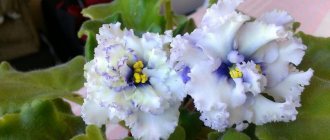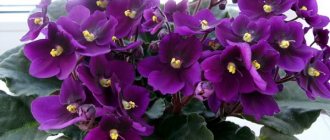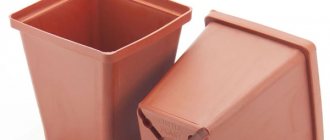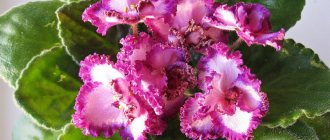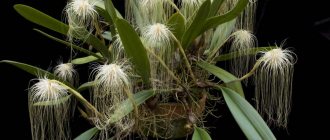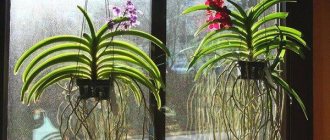Violet Lovestruck (LLG/Sorano), or Madly in Love
Photo and description of the variety
The socket is a large standard. The foliage is quilted, large, dark green. The underside of the leaf plate is red. The petioles are long and brown.
The flower is a large pink star with blue fantasy flecks and a dark purple border around the edges of the petals. The flowers are slightly ruffled.
The diameter of the flower reaches six centimeters. As the bud blooms, the color becomes more and more saturated .
The eye has a more saturated color than the petals. The flowers remain fresh for a long time , but the rich color becomes paler after several weeks of flowering. Burns out quickly.
If you look at a flowering plant, you get the impression that the buds are glowing from the inside.
Peduncles are tall but thin . A large number of buds are formed on each of them. At first it blooms with a cap, but then the stems become thinner and the flowers fall into a rosette.
It is not always possible to collect the correct bouquet of flowers; more often than not, the result is disheveled.
Sports
The Lovestruck variety is prone to genetic mutations.
There is an officially registered sport. This is Nick-Loving Heart . Chimeric variety. This is a large rosette with semi-double fuchsia stars. Violet rays run down the center of the petals. Also, the petals retain fantasy blue blotches and islands with a lighter shade of pink.
American breeders also received a similar chimeric sport , it is called Love Potion . Both sports are very similar to each other.
Other genetic abnormalities in flowering are also possible
Video “Caring for Violets”
In the video, a woman shares her experience of caring for indoor Saintpaulias. After watching the video, you will learn how often you need to water this plant, what to fertilize it with, and what kind of soil you should plant it in.
In the spring, here and there, lilac splashes “flare up”, scattered in different corners of the garden - irises, violets, columbine, pansies. From them you can create wonderful monochrome compositions by choosing plants for the support group of the heroine of the season - lilac, whose flower clouds are sometimes stormy purple, sometimes deep purple, purple, bluish, pink.
In spring, here and there, lilac splashes flare up, scattered in different corners of the garden.
Everyone's favorite shrub is often planted near or behind a fence. For most garden plants, the roadside is a zone of extreme conditions. Just to survive, there’s no time for flowers! But there are also pleasant exceptions.
Irises
First of all, these are irises, with their rich range of shades ideally “reinforcing” the lilac-lilac clouds from the ground.
Irises
On poor, compacted soil and even on gravelly soil, they often bloom and look much better than their counterparts, “fatten” in the rich and wetter soil in the garden on the other side of the fence. In spartan conditions, without watering, without excess nitrogen fertilizers, without neighboring flowers casting a shadow, irises decrease in size, form short, strong peduncles, but the flowers do not become smaller. They are as large as in a regular flower garden. You can read about the variety of types and varieties of irises and the peculiarities of their cultivation in the publications:
- Irises and Co., or Grow a rainbow in your garden
- Irises: planting and care
- How we grew irises
- Siberian irises: features, planting and care
- The most spring irises are iridodictiums.
- Brighter than the rainbow: the best colorful varieties of irises
- Irises in large strokes and 34 facts about them that you might not know yet
Up the Rainbow, or the Story of Irises
Decorative onion
In the sun on poor soil, decorative lilac onions will also perform excellently. It is certainly good in the garden too. However, here, along with the spectacular fireworks that are shot by the tall flower arrows of this rather large plant, its shortcomings are also striking - early fading long leaves. There are fewer complaints about the flowers behind the fence, and the lilac onion salute rising above the yellowing foliage does not bother the eye from afar.
Decorative onions are incredibly effective in any flower garden.
If you still want to disguise the leaves drying out at the height of flowering, then the foreground can be filled, for example, with blue long-rhizome cornflower. This aggressor is not allowed into the noble garden, rightly fearing that it will choke out more demanding garden crops. Behind the fence, an overgrown clump after flowering can be immediately mowed with a trimmer.
As for onions, in poor soil without watering they do not bother with an abundance of children. Abundant self-seeding is also not dangerous here, so there is no need to cut off the balloons after flowering. The onion salute simply changes color: lilac-lilac gives way to green, and later to straw, and the textured hedgehog arrows delight the eye until autumn.
Camassia
Closer to the blue part of the spectrum, the flowers of Camassia Leuchtlina are an unpretentious bulbous perennial, which, thanks to its spectacular appearance, can become the main decoration of a flower garden in the garden. Unfortunately, camassia blooms for only two weeks, but this time coincides very well with the flowering periods of lilacs and onions. Once every 5-6 years, nests of bulbs are planted at intervals of 10-15 cm. The article will tell you more about this plant. A rare guest of flower beds - camassia.
Lupine
In the lupine color palette, light pink shades are added to lilac, violet and blue tones, enriching the lilac range with light romantic chords. After flowering, the trimmer will return the lupine clumps to a neat appearance. New leaves grow very quickly, remaining decorative until the end of the season. Lupine does not need special care from the gardener and even often runs wild in abandoned areas and along roads, and sometimes “runs away” to the meadow behind the village.
Left: you have to be careful with lupine: this textured beauty loves itself so much that it can fill the entire garden. Right: The delicate flower stalks of Aquilegia can be called “buttercup flowers”: after all, the plant belongs to the Ranunculaceae family
The following publications will help you learn more about lupins:
- Lupine - "wolf flower"
- Lupines - a lush garden decoration
- Lupine: a flower for joy, roots for healthy soil
A prerequisite for the plants listed above is sun . Of course, on the northern side, there is no point in “persuading” irises and a group of sun lovers like them to bloom. Other plants will help out here - night violet, aquilegia, cyanosis. They prefer moister soil and grow well in partial shade. This does not mean that they will not survive in the sun; under its rays they can bloom even more magnificently, but in this case, watering will be required during drought, while in the shade the soil naturally retains moisture.
Aquilegia
Aquilegia, or catchment, in the shade under the bushes renews itself by self-seeding. Blue, violet, pink, deep purple flowers harmonize wonderfully with lilac, tinting the flowering bushes with highlights of additional shades. Articles Let me introduce: Aquilegia and Graceful Aquilegia - stars of shady areas will introduce you closer to these interesting flowers.
You can choose aquilegia seeds using our market - an illustrated catalog of products from various online stores.
Caring for a plant at home
The Lovestruck variety is prone to fading. The bright shade on the petals lasts no more than two weeks.
In order for the violet to delight the owner with a riot of colors, it should be kept in the coolest possible conditions.
Proper watering and fertilizing
For full development and flowering, Saintpaulia needs nutrients. Violet receives micro- and macroelements from the soil. After transplanting into fresh soil, the need for fertilizing temporarily disappears. But after two months it is already worth making the first fertilizing.
Since the violet grows in a small pot, it is worth fertilizing frequently and regularly . Mineral supplements contain the necessary substances for the development of green mass or flowering:
- when the plant is small, it is fed with nitrogen . This allows you to grow a full-fledged rosette in a shorter period of time;
- when the violet begins to bloom, fertilizing containing phosphorus and potassium . These substances allow you to prolong flowering, as well as maintain the saturation of shades for a longer period of time.
But ready-made mineral compositions do not contain the necessary substances in full. Fertilizers of organic origin contain a greater amount of useful substances.
But they have a significant drawback - a high concentration of nitrogen. This is good for a plant that is forming a rosette, but not for that violet that has begun to bloom buds.
As a result of overfeeding with nitrogen, violets may stop flowering and begin to actively grow. The Lovestruck variety is not prone to excessive formation of lateral shoots, but with excess nitrogen this is possible.
Saintpaulia is not demanding when it comes to watering, but does not like drying out . Since the outlet is very large, the evaporation area is quite large. This means that violet loves water very much. You can put it on a wick or pour it into a tray.
Attention! Water is given only when the top layer of the earthen clod becomes dry.
Lighting and temperature
Violet prefers long daylight hours. It should last 10-12 hours. In such conditions, you can achieve year-round flowering with short breaks.
With continued light, Lovestruck can bloom all year round.
Despite the rapid fading, the buds remain fresh for quite a long time.
At the correct temperature within + 18-22°C, the violet will bloom for several months.
Air humidity
The optimal option is 55%. A slight deviation from the norm is acceptable. If it is too humid, you should install special devices that capture excess moisture.
Too little moisture in the air causes the leaves to curl and the rosette loses its presentable appearance. To fix the problem, place a bowl filled with water next to the pot.
Soil composition
To grow Saintpaulia Lovestruck, you should use fertile soil rich in minerals and organic substances.
The soil should be light and loose , allow air to pass through well and retain moisture well. Without access to oxygen, violet roots will quickly rot.
You can use standard mixtures that are sold in flower shops. Do-it-yourself earthen mixtures are also suitable. There are many recipes for preparing such compositions.
Main components:
- humus;
- peat;
- river sand;
- leaf and turf soil.
Pruning and hygiene
Violet is not prone to diseases and grows and develops well at home. Caring for the plant consists of timely pruning, replanting, and removing dry and wilted flower stalks.
Reproduction methods
The easiest way to propagate is using leaf cuttings. From 30 to 50% of children go into sports. As a rule, the results are chimeric sports with different shades of rays in the middle of the petal.
If there is a need to obtain a plant with persistent varietal characteristics, you should bring all the children to flowering , and only then sell or give away the surplus.
Leaf propagation.
Advice! As a rule, each baby has its own individual characteristics, which can manifest themselves both in the shade of the petals, the duration of flowering, and in the brightness of the buds.
Transplant rules, rejuvenation
The rosette is large and needs regular replanting and rejuvenation. Approximately once a year in the period between flowering violets should be replanted:
- The plant falls out of the pot;
- Dry and depleted soil is carefully shaken off and replaced with new soil;
- If the root system has grown too large and does not fit into the pot, it should be trimmed a little. You can remove between a third and half of the roots. First of all, diseased or rotten roots are cut off;
- If a white coating has formed inside the pot, it should be removed. This can be done using a citric acid solution.
A few bright bouquets blooming on these gray days.
Hello everybody! A small selection of photos has accumulated. I’m happy to share with everyone what’s new in bloom over the last month:
Olesya - everyone has known her for a long time, I kept looking at her at exhibitions, and at the photos of other collectors, I admired her enough, and calmed down, somehow managed without her in the collection, but suddenly, unexpectedly, I really, really wanted to have her, so such a beauty has blossomed for me, the first flowering:
Grinya - on the wick it grows and develops noticeably better than on the top watering (I grew it from two equal children), the first portrait:
YAN - Speckled - for some reason not very common in collections, but the variety is interesting, with “its own face”:
LE - Tender Lilac - I highly, highly recommend this variety to everyone! Flowers of a dense structure, as if slightly waxy, last a very long time, bloom constantly, in clusters:
LE - Charm - I was extremely pleased; after re-rooting, I finally decided to bloom with really large and lush flowers. I’ve had this variety for a long time, but I’ve never had such lush flowers before:
Lyubasha - another pink one, similar to the Pink Panther, but still different, I really want to get from this variety the kind of flowering that I saw from the mother of my plant, at the exhibition, a huge bouquet of lush flowers, heavily filled with petals, when I purchased a cutting, but for now, alas..., the rosette took a long time to recover, it didn’t produce many flower stalks, but it still turned out to be a nice bouquet:
LE-Wind Rose (sports): if you can’t see the leaves in the large photo, you won’t immediately guess that it’s a violet blooming, and not a real rose:
RS - Modern:
LE - Magenta:
Ma's Easter Parade - "tender" variety:
Gorgeous Mac - with whom I had the same thing as with Olesya, having admired everyone’s collections, it seemed that I had already gotten tired of it and didn’t need it, but suddenly.. I wanted it and even urgently, urgently:
There are only two flowers, but every day they became bigger and bigger and bigger, and I kept photographing them and photographing them:
AN - Blue River: there are several different rivers in the collection, variegation appears and disappears, they all bloom profusely, often and for a long time, if you don’t endlessly remove the leaves, then you get a real river, this time only a trickle, since there are no leaves there is little left:
Freshness (Morev) - good, strong peduncles:
LE - Carousel - growing on the wick:
According to my feelings: festive, bright, completely positive. Reminds me of a variety that has long lived in my PC collection - Margaret, but there is also an elegant rosette:
And finally, I’ll show you the incomparable, skillfully produced flowering TV - Pearl of the Nile, this plant is my successful recent acquisition, although I currently have the variety in my children, but I couldn’t pass by when I saw such a beauty:
The result is a selection of pink ones, except for a couple of wedged varieties.
Now it’s autumn, almost winter, we can’t wait for the sun, having tried this option once, a couple of years ago, this year I did the same, one of the racks placed in the window opening, all adult sockets, after treatment with fitoverm, actara and replanting in fresh peat , put them in double bags, tied them in a loose knot, pre-watered them and tore off all the flower stalks, so the plants will be stored until March without lighting, with watering once a month. In March, these will be lush rosettes with succulent leaves and a bunch of flower stalks. This is primarily convenient so that the plants do not get frostbite from the winter draft when ventilating the room; the double bag provides good protection. Perhaps someone will also find this method of winter storage of violets on the windowsill useful.
One more thing, I’ll boast about the miracle design I received in the mail yesterday, probably familiar to many, since this product has been produced for a long time. I accidentally came across a photo on the Internet and immediately thought, what a useful thing, I need to order it urgently. The wonder is called a spacer for flowers on a window sill of the “bamboo” type, I had such a thing for floor-to-ceiling, but I didn’t know that there were such things for window sills, they are very useful for me for begonias and pellargoniums, and even with lamps, it’s convenient, but not very effective, since the lamps mostly illuminate the room, not the plants, but I have already figured out how to improve this. This is what I grew up in the window opening of the loggia, after much grumbling from my husband while he was collecting, calculating and measuring the levels of fasteners:
All that remains is to purchase 24 identical pots and replant the plants.
Features of flowering, growth and reproduction
Violet grows and develops at home quickly and without any problems. He is not capricious. An adult rosette that produces full flowering grows in about a year.
Varietal characteristics are poorly transmitted; in about half of the cases genetic mutations are obtained. Tends to form chimeric sports.
In cool conditions it produces brighter blooms.
Peduncles are tall, thin, and do not hold flowers well. Despite the fact that there are a lot of buds, it is difficult to get a lush head. One bud blooms for more than a month.
